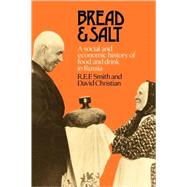
Note: Supplemental materials are not guaranteed with Rental or Used book purchases.
Purchase Benefits
What is included with this book?
| Introduction | |
| The early diet | |
| Farming and gathering: grain and game | |
| Salt: a major extractive industry | |
| Drink: ale and alchemy | |
| State appetite, peasant diet | |
| Controls and code: the seventeenth century | |
| Steppes and counter-measures: the eighteenth century | |
| Tea and temperance | |
| Rural diets on the eve of change | |
| The established pattern | |
| Tavern and treasury | |
| Good time and bad | |
| Conclusion | |
| Bibliography | |
| Index | |
| Table of Contents provided by Publisher. All Rights Reserved. |
The New copy of this book will include any supplemental materials advertised. Please check the title of the book to determine if it should include any access cards, study guides, lab manuals, CDs, etc.
The Used, Rental and eBook copies of this book are not guaranteed to include any supplemental materials. Typically, only the book itself is included. This is true even if the title states it includes any access cards, study guides, lab manuals, CDs, etc.